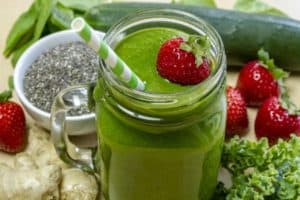Learn how to save money juicing, and tap into this easy method for boosting your nutrients!
 Learn how to save money juicing to give your family the best nutrition available for the lowest cost. Nutrient-dense drinks are a quick and easy way to make sure you get all the vitamins your body needs. Unfortunately, juicing requires special equipment. It also takes lots of fresh fruits and vegetables, something we all know will drive up your grocery costs. Follow these tips from Title Tree to ensure you get the most from your investment.
Learn how to save money juicing to give your family the best nutrition available for the lowest cost. Nutrient-dense drinks are a quick and easy way to make sure you get all the vitamins your body needs. Unfortunately, juicing requires special equipment. It also takes lots of fresh fruits and vegetables, something we all know will drive up your grocery costs. Follow these tips from Title Tree to ensure you get the most from your investment.
Buy (or rent) a masticating juicer.
There are two types of juicing machines on the market, centrifugal and masticating. The difference is in how they process foods for juicing. Centrifugal machines are cheaper, but today’s masticating units aren’t that much more expensive. The difference in quality and performance is worth the difference. Centrifugal machines are faster, but they’re also louder. Plus they can’t process leafy greens, an essential element in the most nutritious juice blends.
Limit your ingredients.
Yes, we know. The latest, greatest juicing recipe might include 10 ingredients you have to buy from a specialty store. While there’s a definite impact on taste — and bragging rights — it’s not necessary to go all out. You do want at least four items to balance out the taste, but none of those need to be exotic.
Aim for good taste.
 Juicing doesn’t have to be all green. If your family refuses to drink your juice, you will wind up wasting your entire investment. It’s best to start out on the sweet side by adding plenty of apples, beets and carrots to your blends. Over time, replace them with lemons and limes, which have very low sugar content. Popular combinations include:
Juicing doesn’t have to be all green. If your family refuses to drink your juice, you will wind up wasting your entire investment. It’s best to start out on the sweet side by adding plenty of apples, beets and carrots to your blends. Over time, replace them with lemons and limes, which have very low sugar content. Popular combinations include:
- lemon, carrot, romaine and ginger
- apple, lime, cucumber and kale
- apple, lemon, lime, cucumber, mint and dandelion
Get creative. Combine carrots, celery and ginger with sweet potato and red bell pepper. Select a few native greens from the yard. Just make sure you add strong flavors sparingly while you mix-and-match. Sweet potatoes pack quite a punch!
Start growing your own.
During warmer times of the year, it’s possible to grow most of the ingredients in your own garden. Spinach, kale, romaine, celery, carrots, cucumbers and herbs are easy to grow. These and other common juicing vegetables can be sown in the ground or in containers. Even a single pot of mint or cilantro will help reduce your costs over time.
Cut back on your daily intake.
According to One Green Planet, 4 oz. of fresh juice is enough to deliver big benefits. Consumed on an empty stomach, that small bit of beverage will get your body refreshed and ready for the day. If you juice later in the day, wait two hours after your last meal. That allows for fast and easy absorption reduces your risks of digestive problems. Remember, the key is to supplement your daily diet, not replace meals.
Maximize the impact of juicing.
Whenever there’s a dietary craze, some who jump on the bandwagon will go about it in the wrong way. Juicing has the potential to do wonderful things for your health, but it can also be a detriment. According to the Food Babe blog, juicing on an empty stomach is one of the easiest ways to maximize your efforts. You should abstain from eating for roughly 20 minutes after you have fresh juice. You should also swish each sip before swallowing to activate saliva production. This encourages your body to absorb nutrients even faster.
Visit your nearest Title Tree store for more tips on how to save money juicing – or if you need a little help making ends meet right about now.
